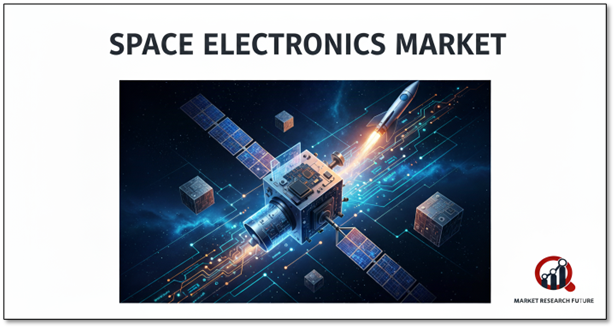Transforming Space: The Market for Space Electronics Is Driven by Printed Electronics

Space Electronics Market
The last frontier is undergoing a high-tech transformation. With the space industry expanding at a never-before-seen pace, there is a greater need than ever for innovative technology that is both economical and efficient. Presenting printed electronics, a revolutionary development that has the potential to revolutionize the global market for space electronics. A new era of space exploration is being ushered in by this ground-breaking technology, which is also making space missions more reliable and economical.
The Reasons Printed Electronics Are Revolutionizing
Any space mission's electrical, electronic, and electro-mechanical (EEE) components are critical to its success. The production of traditional EEE parts can be costly, time-consuming, and bulky. These parts are now being printed by space agencies, which has several benefits:
Flexibility and Customization: Printed EEE parts provide unmatched design flexibility because they can be made in almost any shape. This is essential for making the best use of the limited space inside spacecraft and satellites.
Lower Production Time and Cost: Compared to standard EEE parts, printed electronics are about 95% less expensive to manufacture. Complex fabrication plants are not necessary because the process is simplified and can be completed locally, significantly reducing manufacturing lead times.
Improved Performance: Printed electronics make space systems lighter and more robust by drastically reducing mass and increasing the system's overall robustness, two important aspects for long-duration missions.
This technology is becoming a more relevant and sought-after solution since it is well-suited to the particular needs of the space industry for low-volume, high-variety components.
Important Innovations and Trends in the Industry
There is a lot of investment and activity in the space electronics sector. A surge of R&D investments has been sparked by the developing commercial space industry, with an emphasis on cutting-edge technologies that can be incorporated into the value chain of space resources. Businesses are investigating cutting-edge solutions such as:
Beyond electronics, additive manufacturing (3D printing) is being used to build everything from nuclear power reactors for massive energy production in space to robots with artificial intelligence and satellite components.
Lighter and More Effective Components: There is a rising need for parts that can be produced with the least amount of expense and material waste. A key component of contemporary space initiatives, printed electronics is leading the way in this trend.
Regional Dominance and the Competitive Environment
There are many big companies fighting for a piece of the fiercely competitive global space electronics market. As businesses look to create cutting-edge products to satisfy the growing demand worldwide, the competition is spurring innovation and strategic partnerships.
Due to the presence of important technology providers, a thriving ecosystem of scientists, engineers, and private investors, as well as an increase in government-led space exploration activities, North America currently dominates this market.
Printed electronics are positioned to play a significant role in driving innovation in the space industry as it grows, making space exploration more affordable, accessible, and effective than in the past.

Leave a Comment